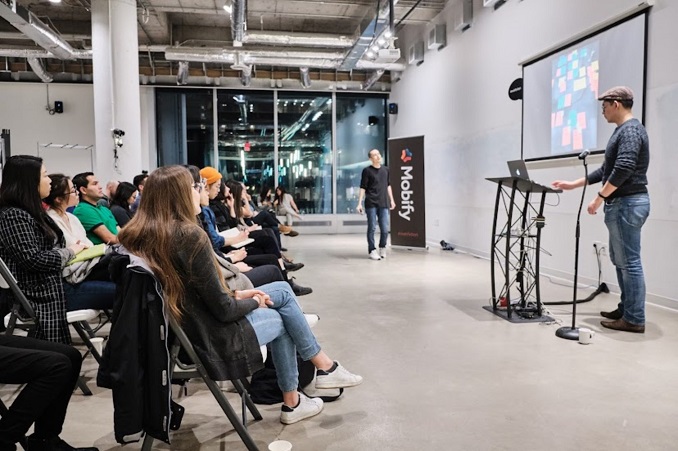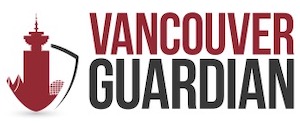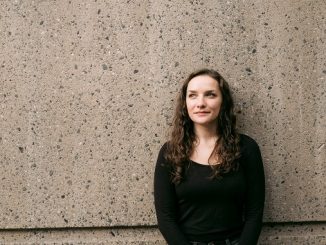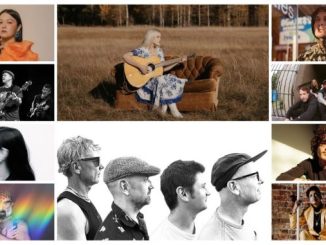Uniqueways with Thomas Girard is an audio podcast on Spotify that originally focussed on guests in the design, arts and humanities spaces but has since drawn guests from a variety of backgrounds. We spoke with the creator, Thomas Girard, to find out more about this project.

What is your channel called and what is it about?
My audio podcast is called Uniqueways with Thomas Girard. It’s defined by recent guests. Originally it was guests in the design, arts and humanities. Recent guest Bisi Williams describes the podcast as a space that adds depth to the design conversation, involving scholars and academics in this field. I feel like that can be part of it as well. But in sum, we do offer a space for people of all walks of life to be heard and have a platform to speak.
What is your creative process? Do you have people who work with you?
My day to day creative process is researching potential guests, pitching and recruiting, recording. The podcast recording studio, a constant iterative evolving space, is coming together and also inspires a creative process. The people I work with are the guests. I also have key people I’m close to that I soundboard my ideas with and get motivated from, over dinner, drinks. Even just through DMs. My creative process is defined or directed by some of the big guests we’ve had over the recent months – John Maeda and Debbie Millman. Erik Spiekermann in the typography space. Dr. Ron Burnett and Dr. Philippe Pasquier locally. Bisi Williams Mau from the Canada and the women leadership categories.
When did you start it? What motivated you at the beginning?
I think I was motivated by Debbie Millman, who is on an academic journey which lead to a podcast. I started a few months ago but it feels like it’s been much longer. The time does fly by but at the same time when you commit yourself to be in a creative process, in a creative space like the podcast recording studio, sometimes the inspiration is there and sometimes it isn’t. So days are kind of up and down. In the end, it results in something spectacular of course. But yeah, at the beginning I was really just driven by the calibre of guests. Especially when John Maeda came on. That was a key moment for me near the beginning where I said yes, I can do this.
Who were you inspired by? Any influences?
Again, Debbie Millman, who is on an academic journey which lead to a podcast. Her voice about women in leadership in design, and her high profile relationship with Roxane Gay were really driving forces behind understanding that I could do this, and I could do this in my own way. The average joes asked about monetizing, about sound quality, about consistency with episodes, but in terms of providing a worldview and, yeah, influence, it would be people like Debbie Millman. Actually not people like her, but her specifically.
How would you describe your audience?
Our audience is mainly in Canada, USA. But when we first started looking at the podcast charts, I think at one point I got a random email telling me that I was #2 in Hong Kong, in the design category. I thought it was a joke but it was true. I think in part because one of our popular early guests, Keith Tam, built a community and audience in Hong Kong for me. But yeah, now it’s Canada and the US mainly. Which is interesting because I’ve always struggled to build a significant audience in Canada with my creative projects.
What is your creative process? Do you have people who work with you?
Just me! My podcast recording studio enables a creative process. I’m not a decorative person, but I recently started decorating it with design objects. I put up framed print with quotes from Canadian artists and author Douglas Coupland. I bought these French tumblers from Inform Interiors here in Vancouver and stocked up on wine, a rose and temprenillos, Heineken, Grey Goose, anything anyone might want if they were to come into the space. Because it’s been entirely on Zoom I’m still anticipating having my first guests in the podcast recording studio. But it’s more or less, a WIP, but more or less set-up.
How do you monetize your content? Do you also have another job?
I’m a scholar, which has a lot of pieces – The podcast is one of those pieces. But the podcast leads to teaching and teaching is what pays the bills for the most part. There are some book sales as well. But I don’t do promoted posts, or promote products, or do any on air ads. I’m not opposed to that, it just hasn’t been the route for me. The podcast brings attention to other things I’m doing and builds a community which can support my other related work.
What is your favourite piece of content you have created?
Probably the episode with John Maeda. John Maeda is a former tenured professor at MIT, former president of Rhode Island School of Design, former Head at Automatic, parent company of WordPress, book author of the best seller “How to Speak Machine”. That was a truly special episode. He provided so much humanity, of course for the audience, but also personally for me that I could apply to my own personal endeavours.
What is the best part about what you do? What is the worst part?
It’s all amazing, there is no worst part. The best part is being part of a community that came together around this. Which means the community of former distinguished guests. The best part is also that people jump on the chance to be on the show. I rarely get a no after inviting someone. If I get a no it’s because a person is intimidated, which they shouldn’t be, I’ve had a lot of first time podcast guests on the show. The big players are usually a yes right away.
What are your future plans for your channel?
I’d like to branch outside of my personal circle, to reach more and different kinds of people. Aiming for 140 episodes. But the YouTube presence was something I wanted and took many hours to digitize for YouTube, and upload the content, with very little payback. I’m not bothered by that though. I realize now in order to move up I’m not going to have much low hanging fruit. It’s going to take a lot of effort at this point to continue to ramp up. Future plans would be to just keep going. Keep building the physical podcast recording studio space. Maybe have some people over and try to have more discussion. Keep it going.
Where can we follow you?
PAY IT FORWARD: What is another Canadian content creator that you love?
Bisi Williams Mau is a recent guest and inspiration. Her partner is Bruce Mau, famous Canadian Graphic Designer. I know him as the first designer to have a solo show at the Vancouver Art Gallery. I bought his books really early on, including Massive Change and Lifestyles. So that’s how I first learnt about Bisi. Later I realized that because Bruce Maus career has grown and expanded and widened, she was starting to be in that picture. And because her efforts are so distinct, and I would say, different than Bruce Maus, I think she’s been able to get attention for herself, separate from him. So yeah, her creativity and research drive work particularly are very much something I love.




